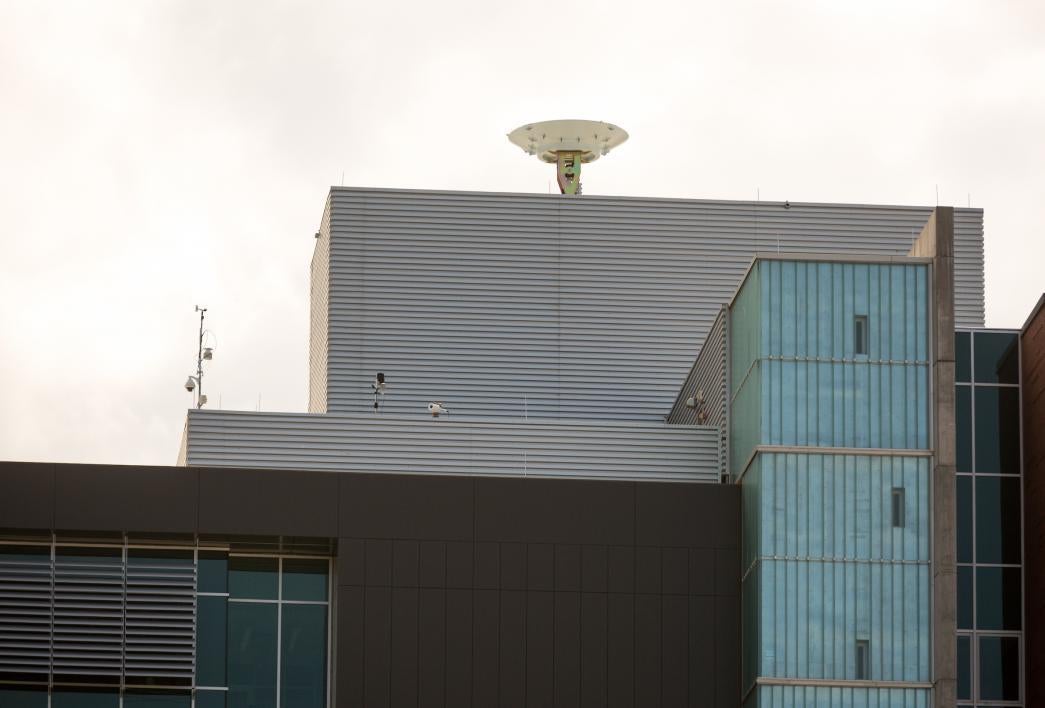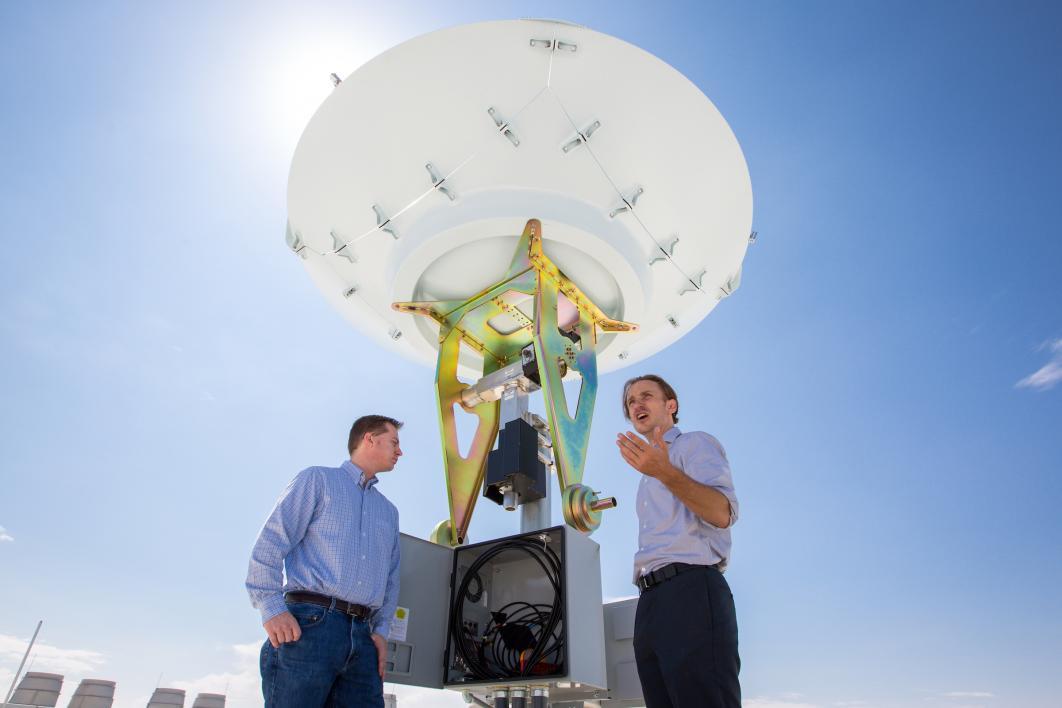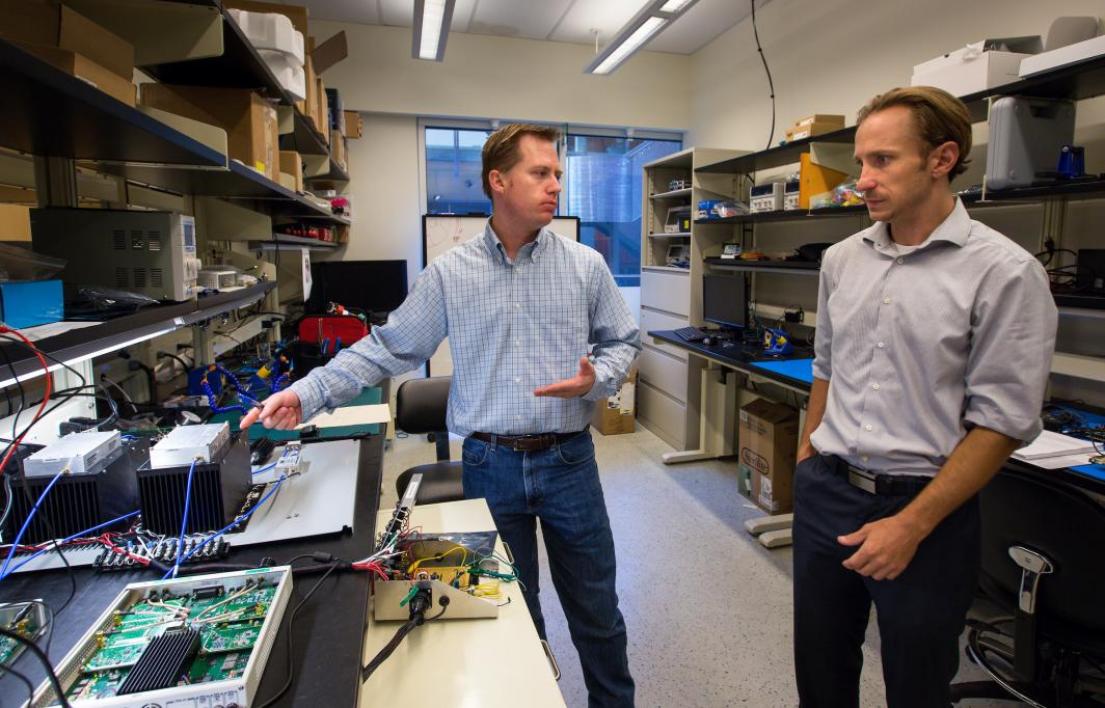We can hear them now.
A new ground tracking station featuring a 10-foot diameter dish at Arizona State University’s Tempe campus will allow researchers to communicate with satellites.
Installed on the roof of the School of Earth and Space Exploration building this summer, the station will be able to relay information with spacecraft in low Earth orbit, and maybe farther, according to Jim Bell, one of the faculty members playing a leading role in the development of the ground station.
“Part of the goal is to communicate with small satellites we launch and operate,” said Bell, an astronomer, planetary scientist, professor in the School of Earth & Space Exploration and veteran of nine NASA missions. “The other part of the goal is student education.”
The station also will be able to download data from the three satellites being developed at ASU. It’s a research project that augments other research projects, said lead undergraduate student developer Jeremy Jakubowski, a junior majoring in computer science.
“None of the satellite proposals we have at ASU work without a ground station,” Jakubowski said.
How far the station can reach remains in question, Bell said.
“It looks like it’s a big dish, but it’s not big enough to communicate with deep space,” he said. “We’ll try some tests with small satellites that go farther out.”
One of those tests will be working with NASA’s Jet Propulsion Laboratory to receive information from the MarCo mission in 2018. MarCo (an abbreviation of Mars Cube One) is a technology demonstration of CubeSats, the standardized small satellites developed by a former ASU researcher. The CubeSats flying on the next Mars mission will be 6Us: six standard 3- by 3- by 3-inch CubeSats stacked together. They will be the first to leave Earth's orbit and the smallest objects ever to fly across deep space to another planet.
The Mars mission, known as InSight, will consist of those CubeSats and a lander. They’ll be launched on an Atlas V rocket, be deployed into space and then, like three siblings walking to the bus stop before going their own ways, fly separately to Mars.
The CubeSats will relay radio signals from the stationary lander deployed to the Red Planet’s surface, confirming a successful landing. Chief engineer on the mission is Jet Propulsion Laboratory engineer Andy Klesh, an adjunct professor at the School of Earth and Space Exploration. Klesh also worked on the ground station project.
“JPL has been a huge help as well,” Bell said. “Hopefully, sometime this semester or next semester we’ll be doing tests, listening to satellites already up there.”
They will also attempt to transmit to the LunaH-Map mission in 2018. An entirely ASU-led effort, that mission will send a cutting edge nanosatellite smaller than a piece of carry-on luggage to the moon, orbit around the poles 141 times during 60 days sniffing for hydrogen, transmit what it finds back to Earth, and then, having done its job, crash (be “disposed” of, in NASA parlance) into the south pole.
“Hopefully, we can talk to it some of the time,” Jakubowski said about LunaH-Map. “The idea behind every satellite ground station is to get data down.”
Chris Marrs, electrical engineer on the project and a junior working on an electrical engineering degree, designed and built a circuit on the station. The large dish has a 360-degree azimuth, allowing it to pick up signals from any direction.
“It’s a dish that tracks,” Marrs said. “It opens up a much larger window for us to download data. … The good thing about this is it’s going to be a perpetual project. This is going to be in development for the rest of its life. We’ll constantly be adding capabilities.”
The dish will directly communicate with three satellite projects currently in the works at ASU:
— Asteroid Origins Satellite (AOSAT) 1 will carry crushed meteorites and demonstrate a centrifuge laboratory in low Earth orbit. By spinning the spacecraft at 1 rpm, it will produce a centrifugal force that simulates the gravity of an asteroid. AOSAT 1 will launch in 2017 and be deployed from the International Space Station shortly thereafter.
— PhxSat will monitor the effects of the urban heat island effect on cities such as Honolulu and New York, primarily focusing on Phoenix. Data collected over a year is expected to lead to insight on health effects of urban heat, external effects on the environment, and the extent of the consequences of climate change. The student-led project will launch in August of 2017.
— The Space Weather and Impact Monitoring Satellite (SWIMSat) will be a shoebox-sized spacecraft designed and built by students under the guidance of Erik Asphaug, professor of the School of Earth and Space Exploration (Ronald Greeley Chair of Planetary Science) and co-principal investigator Jekan Thanga, assistant professor in the School of Earth and Space Exploration and head of the Space and Terrestrial Robotic Exploration Laboratory. It is expected to launch in 2019.
More Science and technology

ASU researcher part of team discovering ways to fight drug-resistant bacteria
A new study published in the Science Advances journal featuring Arizona State University researchers has found vulnerabilities in certain strains of bacteria that are antibiotic resistant, just…

ASU student researchers get early, hands-on experience in engineering research
Using computer science to aid endangered species reintroduction, enhance software engineering education and improve semiconductor material performance are just some of the ways Arizona State…

ASU professor honored with prestigious award for being a cybersecurity trailblazer
At first, he thought it was a drill.On Sept. 11, 2001, Gail-Joon Ahn sat in a conference room in Fort Meade, Maryland. The cybersecurity researcher was part of a group that had been invited…



